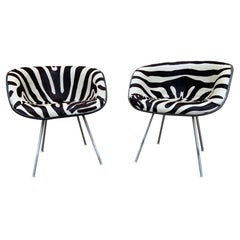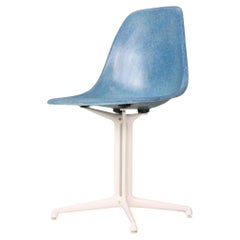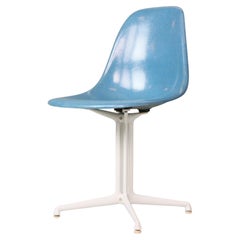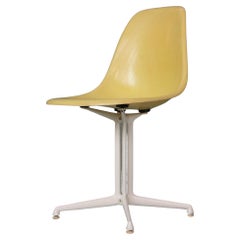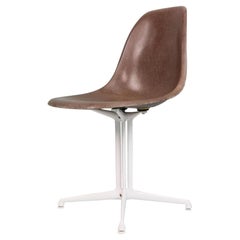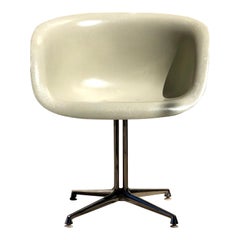Eames La Fonda
Mid-20th Century American Mid-Century Modern Chairs
Aluminum
Vintage 1960s American Mid-Century Modern Dining Room Chairs
Aluminum
Vintage 1960s American Mid-Century Modern Dining Room Chairs
Aluminum
1990s American Mid-Century Modern Dining Room Chairs
Fabric, Fiberglass
Vintage 1960s American Mid-Century Modern Dining Room Chairs
Aluminum
Vintage 1960s American Mid-Century Modern Dining Room Chairs
Aluminum
Vintage 1960s American Mid-Century Modern Armchairs
Steel
Mid-20th Century Minimalist Side Tables
Aluminum
Vintage 1970s American Mid-Century Modern Side Chairs
Metal
Vintage 1970s American Mid-Century Modern Coffee and Cocktail Tables
Travertine, Chrome
Vintage 1960s American Mid-Century Modern Side Chairs
Aluminum
Vintage 1970s American Mid-Century Modern End Tables
Marble, Chrome
Vintage 1960s American Modern Armchairs
Aluminum
Vintage 1960s American Modern Armchairs
Aluminum
Vintage 1960s American Mid-Century Modern End Tables
Marble, Steel
Vintage 1960s American Mid-Century Modern Chaise Longues
Aluminum
Vintage 1960s American Mid-Century Modern Lounge Chairs
Upholstery, Fiberglass
Vintage 1970s Mid-Century Modern Coffee and Cocktail Tables
Marble, Chrome
2010s Tables
Marble
20th Century American Mid-Century Modern Side Tables
Slate, Chrome
Mid-20th Century American Mid-Century Modern Armchairs
Metal
Vintage 1960s Virgin Islands Mid-Century Modern Chairs
Metal
Mid-20th Century American Mid-Century Modern Coffee and Cocktail Tables
Marble, Aluminum
Vintage 1960s Virgin Islands Mid-Century Modern Chairs
Metal
Vintage 1970s American Modern Coffee and Cocktail Tables
Marble, Metal
Vintage 1970s American Modern Coffee and Cocktail Tables
Aluminum, Chrome
Vintage 1960s American Mid-Century Modern Coffee and Cocktail Tables
Vintage 1960s Virgin Islands Mid-Century Modern Chairs
Metal
Vintage 1960s American Mid-Century Modern Chairs
Aluminum
Vintage 1960s American Mid-Century Modern Dining Room Chairs
Metal
Vintage 1960s American Modern Side Chairs
Aluminum
Vintage 1960s American Mid-Century Modern Coffee and Cocktail Tables
Slate, Chrome
20th Century German Mid-Century Modern Side Chairs
Metal
20th Century German Mid-Century Modern Side Chairs
Metal
Vintage 1960s American Modern Coffee and Cocktail Tables
Aluminum
Vintage 1980s Italian International Style Chairs
Steel, Chrome
Vintage 1970s American Mid-Century Modern Chairs
Fiberglass
1990s American Mid-Century Modern Coffee and Cocktail Tables
Chrome
Vintage 1960s American Mid-Century Modern Chairs
Aluminum
Vintage 1970s American Mid-Century Modern Chairs
Fiberglass
Vintage 1960s American Mid-Century Modern Armchairs
Aluminum
Vintage 1960s American Mid-Century Modern Chairs
Leather, Fiberglass
Vintage 1960s American Mid-Century Modern Dining Room Chairs
Leather, Fiberglass
Vintage 1960s Swiss Mid-Century Modern Dining Room Chairs
Aluminum
Vintage 1960s American Mid-Century Modern Club Chairs
Aluminum
Vintage 1970s Mid-Century Modern Dining Room Chairs
Faux Leather, Fiberglass
Vintage 1960s American Chairs
Chrome
Mid-20th Century American Mid-Century Modern Side Chairs
Steel
Mid-20th Century American Mid-Century Modern Side Chairs
Steel
20th Century American Side Tables
Vintage 1950s British Mid-Century Modern Coffee and Cocktail Tables
Metal
Vintage 1960s American Mid-Century Modern Chairs
Aluminum
Mid-20th Century North American Mid-Century Modern Side Tables
Slate, Aluminum
Vintage 1960s American Mid-Century Modern Side Chairs
Aluminum
Vintage 1970s American Mid-Century Modern Armchairs
Fabric, Fiberglass
Vintage 1960s American Space Age Dining Room Chairs
Fabric, Fiberglass
Vintage 1960s American Mid-Century Modern Dining Room Chairs
Metal
Vintage 1960s American Space Age Dining Room Chairs
Chrome
- 1
Eames La Fonda For Sale on 1stDibs
How Much is a Eames La Fonda?
Read More
The 21 Most Popular Mid-Century Modern Chairs
You know the designs, now get the stories about how they came to be.
Mies van der Rohe’s Barcelona Chair Shook Modernism and Charmed Hollywood
The enduring appeal of the Barcelona chair is in the details.
Herman Miller Got Its Start in the Office, but Its Legacy Is in the Home
The brand that turned Charles and Ray Eames, Isamu Noguchi and George Nelson into mid-century household names is just as relevant today as it was six decades ago.
May’s Most Popular Interiors on Instagram
Our feed is filled with the world's most beautiful spaces. See the rooms our followers have deemed the best of the best this month.
April’s Most-Liked Interiors on Instagram
Our feed is filled with the world's most beautiful spaces. See the 10 our followers have deemed the best of the best this month.
See How New York City Designers Experiment on Their Own Homes
There are many lessons to be learned from the lofts, apartments and townhouses of architects and decorators in Manhattan and beyond.
Jeff Andrews Captures Old Hollywood Glamour in His Cinematic Spaces
Having created extravagant homes for reality TV’s biggest stars, the designer is stepping into the spotlight with his first book.
New Orleans’ Lee Ledbetter Makes Design Magic by Mixing Past and Present
The Louisiana-born and -bred architect talks to 1stdibs about the art of making timeless places that matter.
